Best winter plants for pots and borders – 15 ideas to bring your yard to life during the colder months
Add color, fragrance and structural interest to your winter garden with these beautiful plants

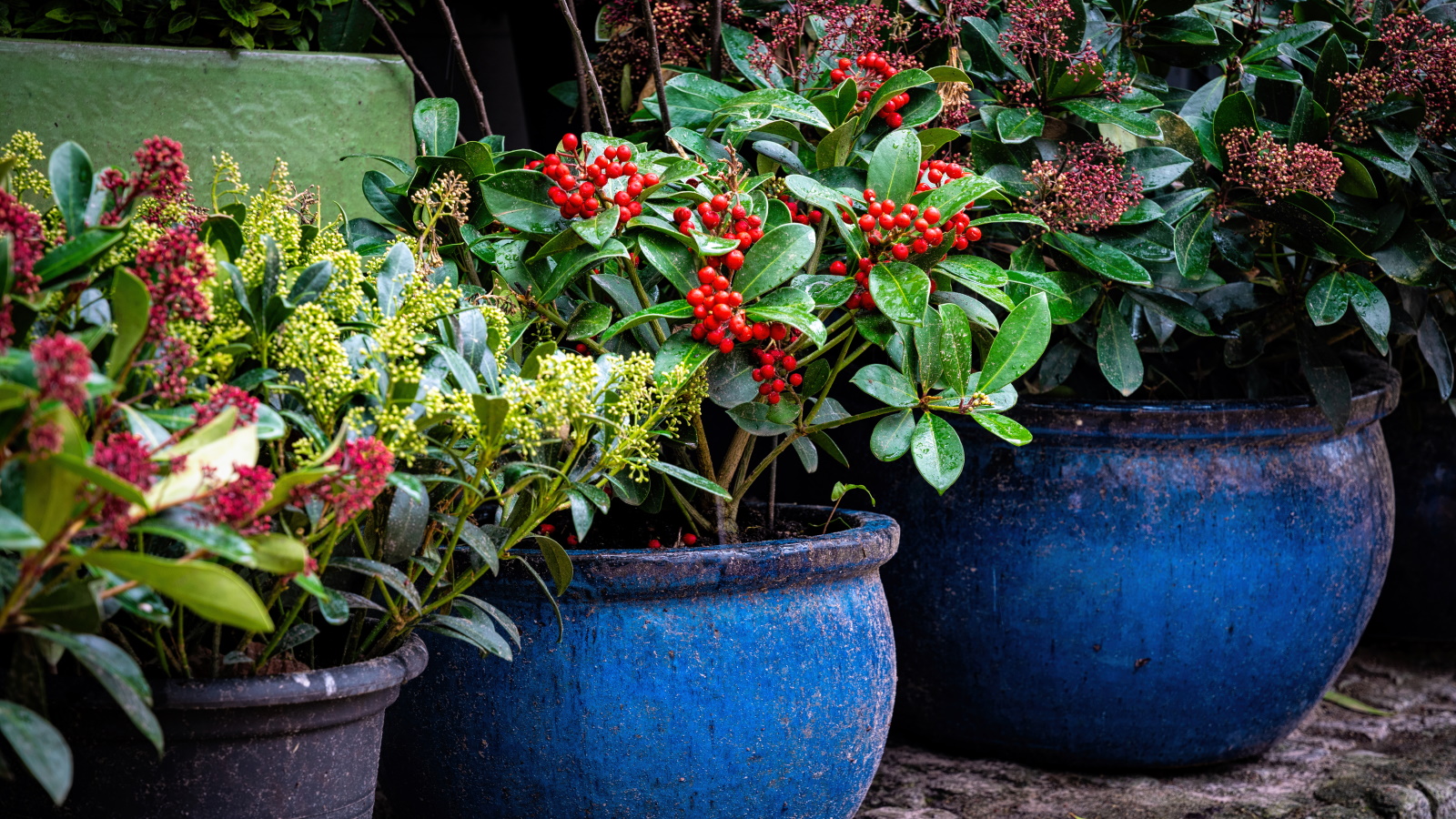
There are many options to choose for the best winter plants for pots and borders. Rather than winter presenting a dull and colorless season in the garden, your outdoor space could in fact be full of color and interest with some careful planning.
There is a huge variety of plants that can add seasonal interest – from flowering evergreens, vibrant fiery steams, tactile tree barks, and colorful pops of colour from winter-flowering bulbs – so ensure you include these in your winter garden ideas.
When planning a winter garden it's also important to create a succession of interest from the best winter plants to suit the conditions in your hardiness zone. Here, we've put together an expert list of the best winter plants for pots and borders to get your started.
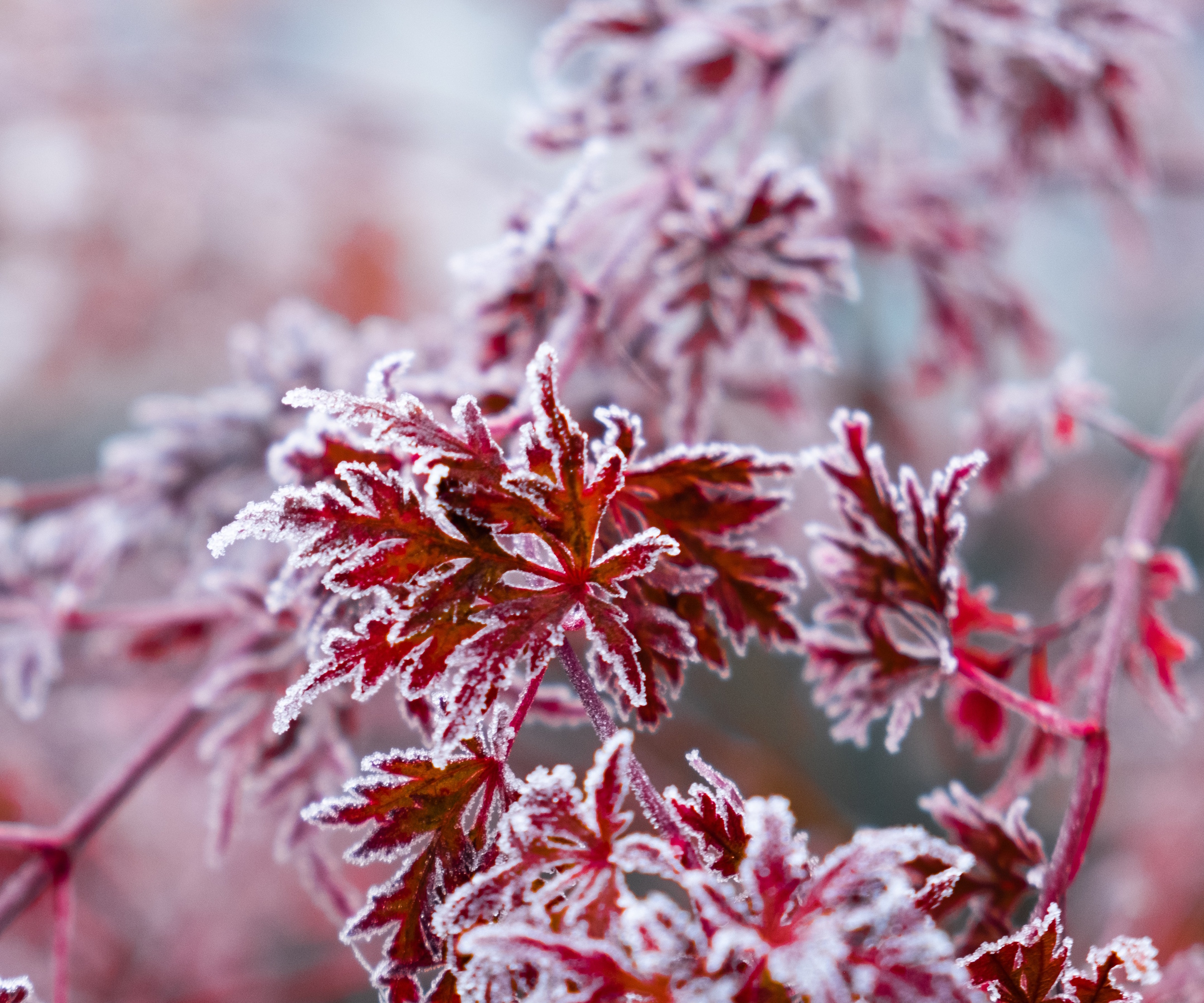
Best winter plants for borders
'Depending on how mild the local climate is during winter, some gardeners may be able to grow cool-season annuals throughout the winter months and well into spring. In places with cold, snowy weather the winter color season may only last until the arrival of freezing temps or heavy snowfall,' explains Zolene Quindoy, head of horticulture at Yardzen.
'Winter-blooming annuals are a popular option for adding color to the landscape,' she adds.
When looking for the best winter plants, it also serves to lend nature a helping hand, providing essential food for birds and pollinating insects as wildlife garden ideas. For example, by using early-flowering perennials like mahonia. Along with many other best winter flowers, this can provide crucial food sources for pollinators.
When choosing the best winter plants for borders, start with evergreen shrubs and trees, which will add an essential backbone to your garden. Underplant trees with woodland bulbs and hellebores, and consider flowering plants that will add fragrance to enliven the senses.
Design expertise in your inbox – from inspiring decorating ideas and beautiful celebrity homes to practical gardening advice and shopping round-ups.
These are the best plants to transition fall containers to winter.
1. Violas
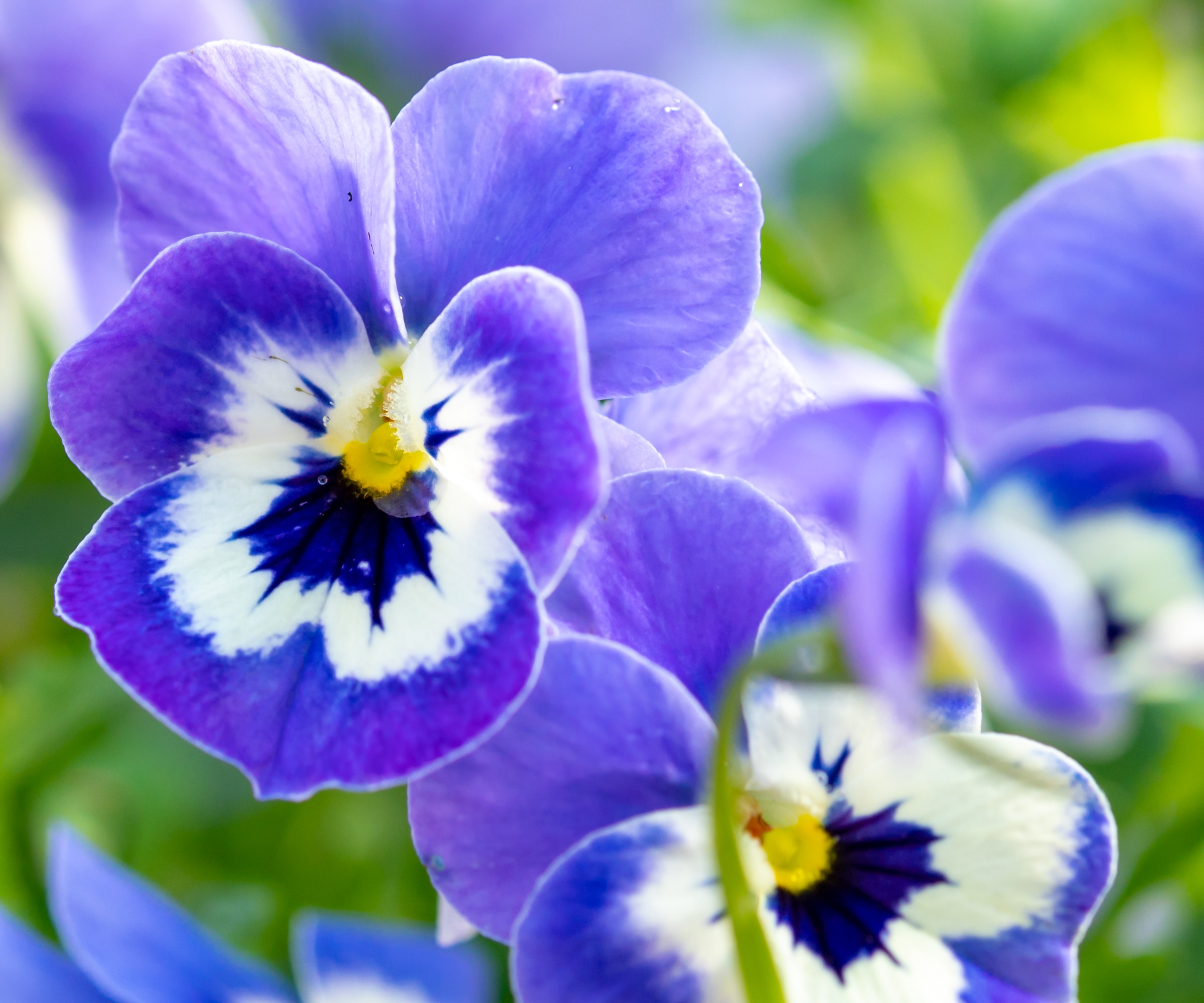
Although of the same family, violas are distinguishable from pansies as they tend to have smaller flowers, but are often grouped together when looking at the best winter pansies.
'Violas are one of the shortest options – usually between six and eight inches tall – so they work well in walkway borders where they can be viewed up close,' says Zolene.
'Alternatively, they can be planted en masse for a dramatic display of color. Violas are also a good candidate for planting over bulbs, as their fibrous roots are not aggressive and easily allow bulb foliage to poke through toward the soil surface,' she adds.
They can also be added to winter hanging basket ideas for colourful displays by entrances.
Violas tend to be hardy across US hardiness zone three to zone eight.
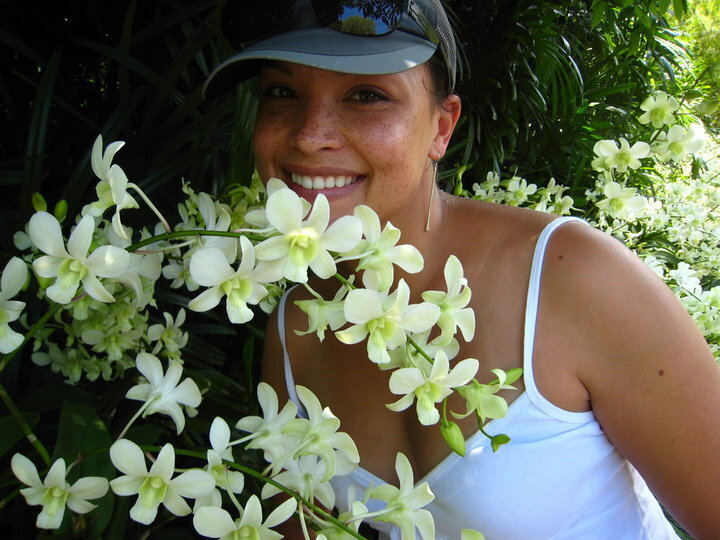
Zolene is Head of Horticulture at Yarzden. She advises on a range of horticulture and gardening matters.
2. Snapdragons
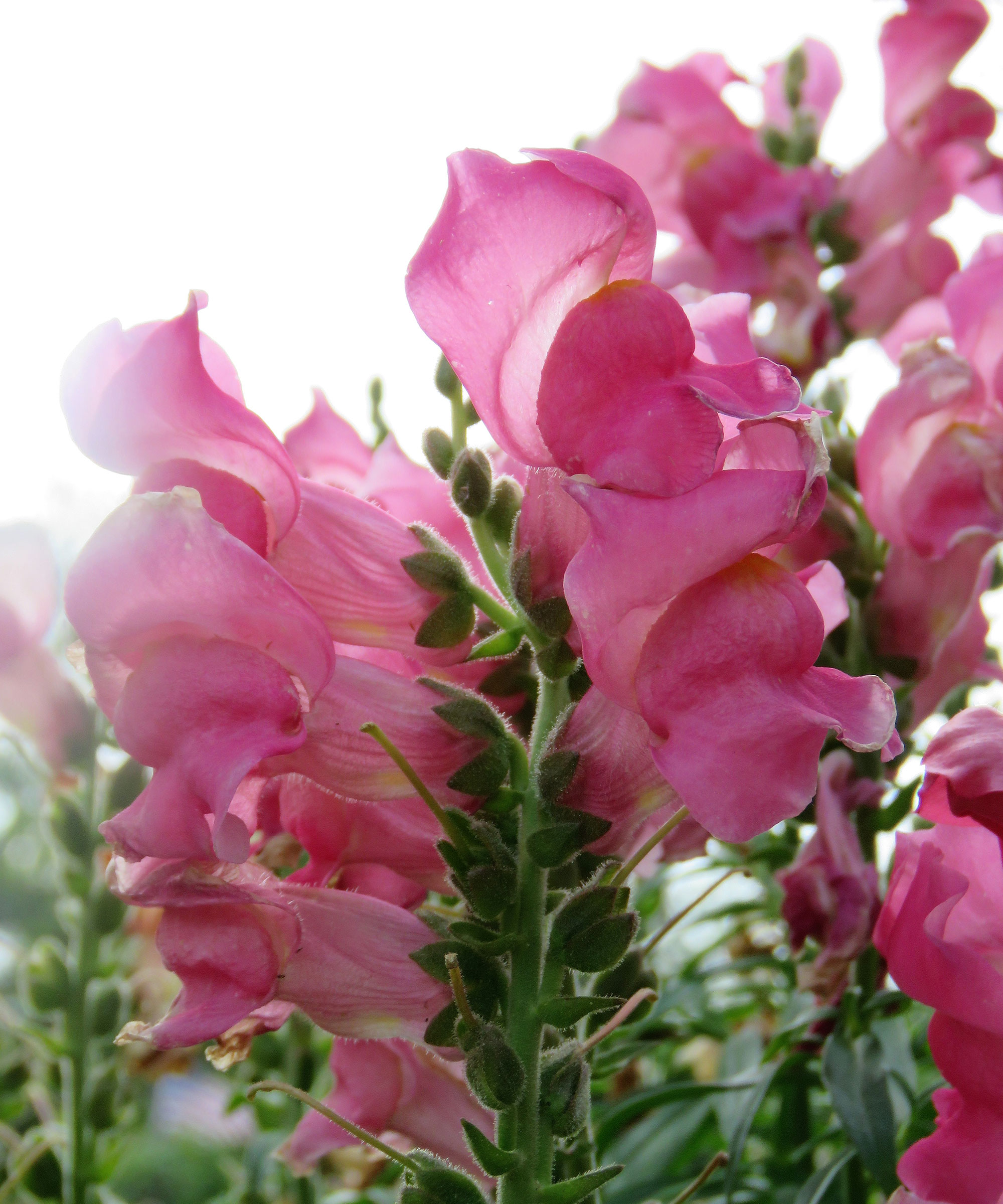
In milder climates, you snapdragons will bloom into winter: 'Snapdragons offer the widest range of flower colors and heights, as varieties have been bred to come in pastels as well as bright hues, and with flower spikes ranging from 6” to over 3’ tall,' says Zolene.
It is easy to learn how to grow snapdradons and 'these staples of the sunny, cool-season border can tolerate light frost, and are hardy to USDA zone seven. When freezing temps arrive, plants will benefit from a layer of mulch to protect the growing points on the crown, so growth can resume in spring,' adds Zolene.
3. Bergenia
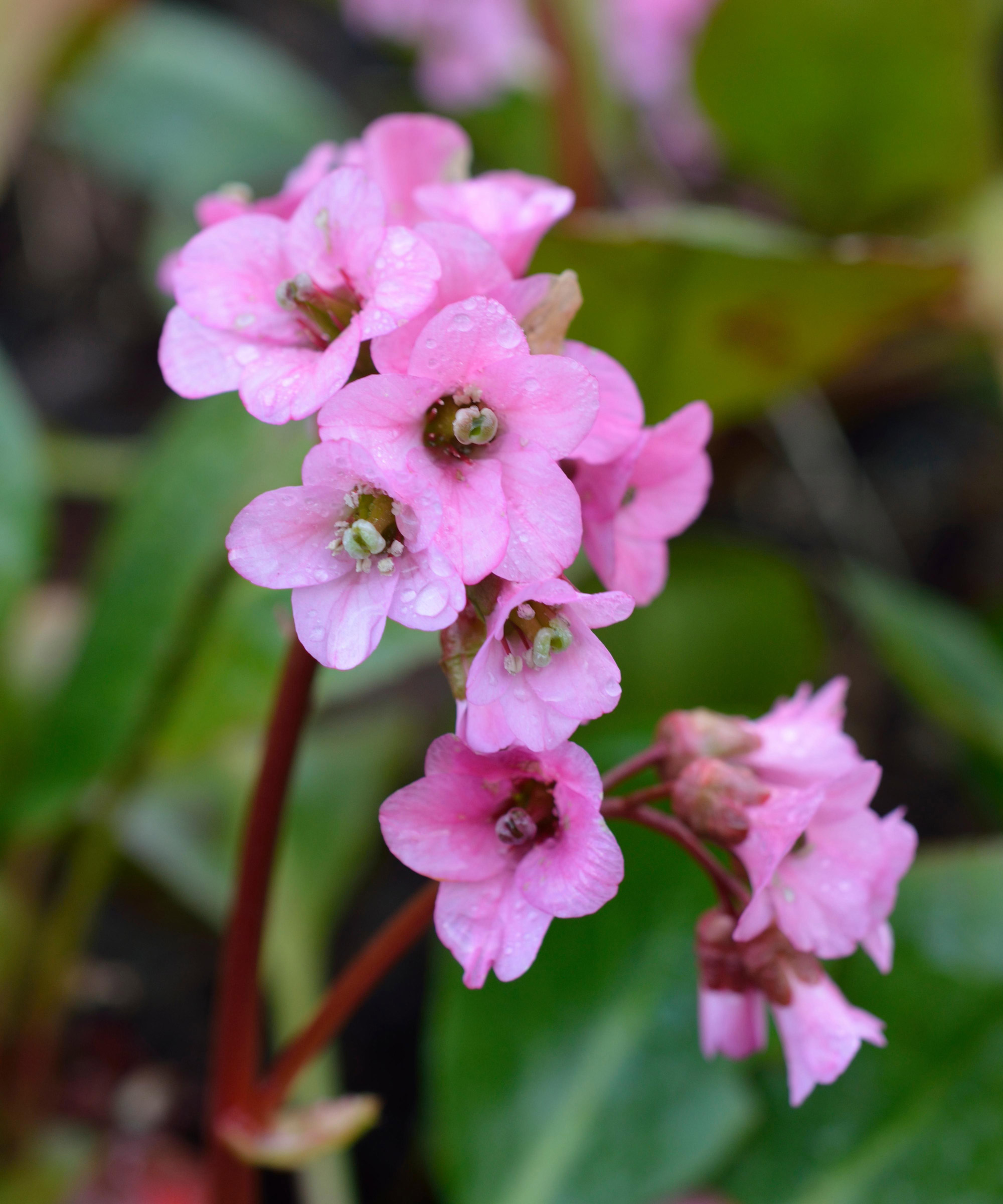
If you love purple plants, then extend this bright color into the winter season with a range of bergenia plants. They also offer beautiful evergreen foliage.
'Bergenias have evergreen foliage in all but the harshest climates,' says Chuck Pavlich, director of new product development with Terra Nova Nurseries.
'The new 'Pig Squeak' will turn dark purple-burgundy with cold weather. In the spring, bouquet-like clusters of stems emerge, covered in lilac-violet buds that open to bright pink with a picotee edge and a deep burgundy eye,' Chuck adds.
There are so many types of bergenia to choose from, all growing best across US hardiness zone four to zone 10. This Winter Glow Bergenia from Nature Hills is another beautiful option for the colder season.

Educated at Washington State University, he has worked in the retail nursery business for 30 years. Chuck brings his passion for plants to TERRA NOVA®. As our Director of New Product Development, Chuck is responsible for new ideas for the breeders as well as overseeing the breeding process and shepherding our new products to the world perennial market. His current breeding projects include Begonia and Coleus.
4. Viburnum
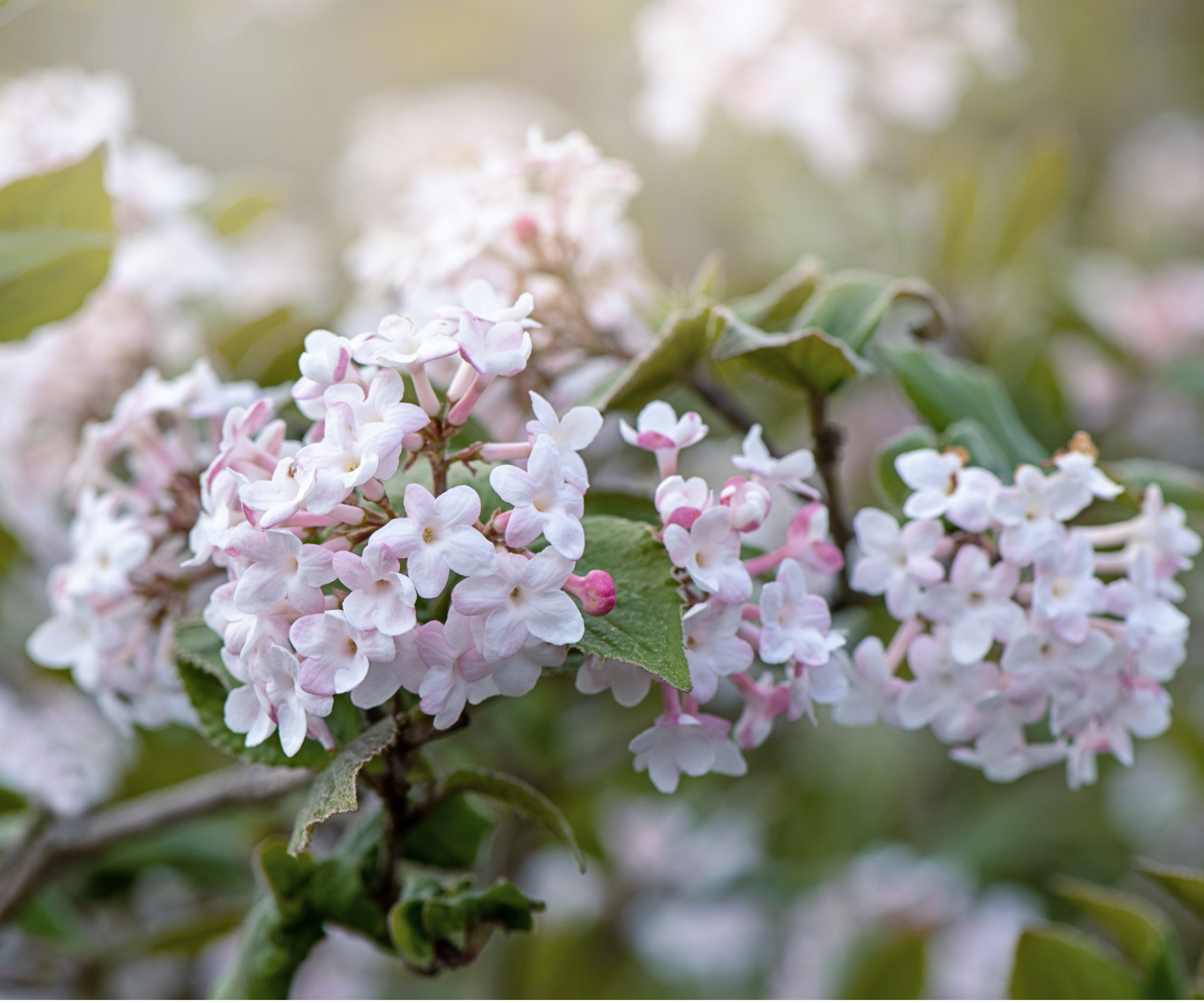
This glossy evergreen is among the best winter plants. Growing viburnum for winter is straightforward and it rewards you with pink-white, fragrant flowers.
This is a great choice of flowering shrub to plant in a front yard for visitors to brush past its fragrant blooms on their way in. You just need to take care to prune viburnum after flowering to keep it looking its best.
Viburnum will grow well across US hardiness zone two to zone 10, and you can shop the range of viburnum bushes available at Nature Hills.
5. Daphne bholua
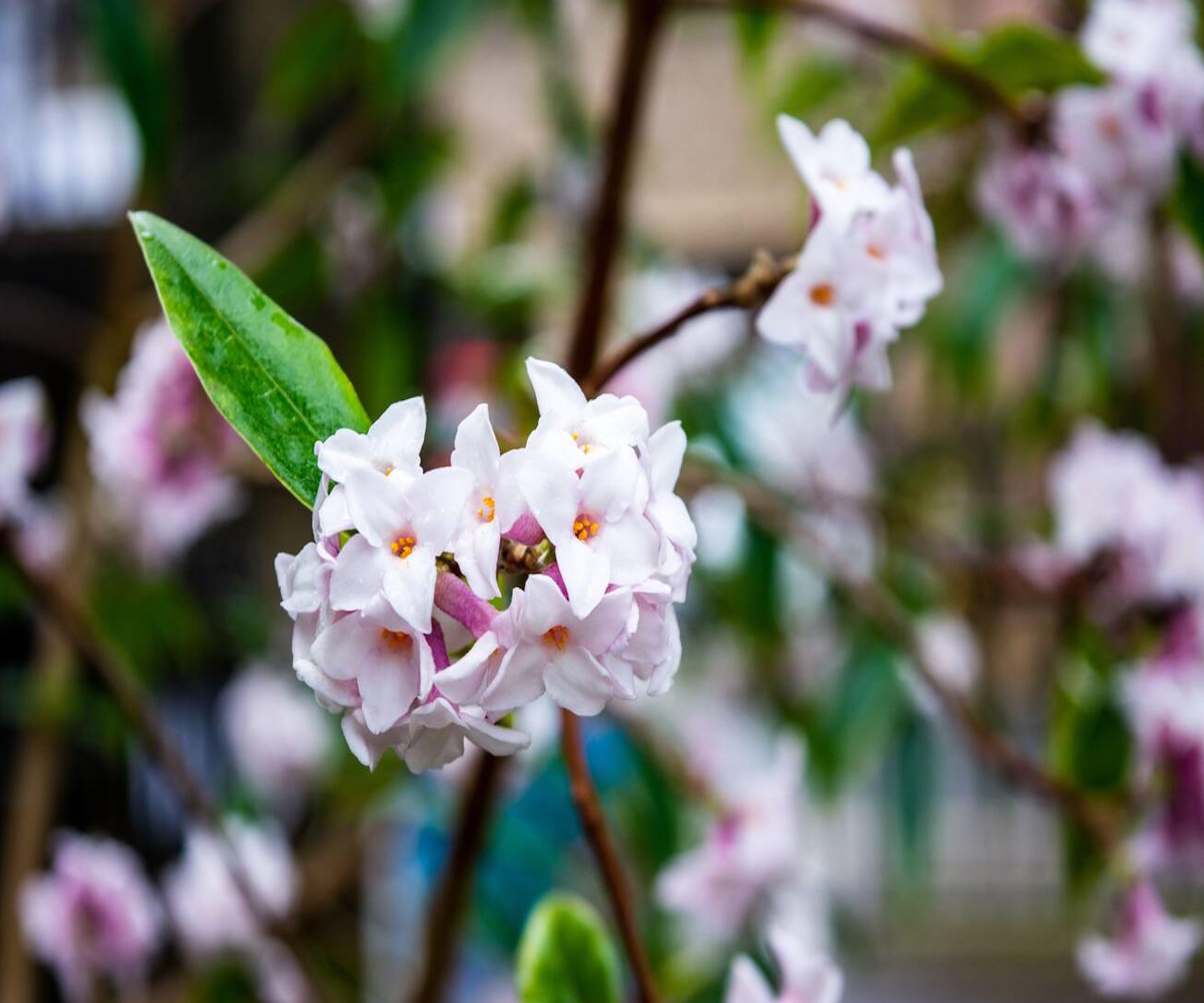
Available as both deciduous or evergreen shrubs, daphne has deliciously fragrant pink blooms and is among one of the best fragrant flowers for a winter garden.
Grow daphne in a sunny, sheltered position and enjoy the heart lifting blooms in the depths of winter.
Daphne grows well across US hardiness zones four to zone nine and it can be grown from these daphne seeds from Amazon.
6. Ornamental cabbage

Unusual but worthy additions to the list of best winter plants are ornamental cabbages and kale.
'They are related to the edible crops of the same name, but have been bred for a compact, rosette habit and showy foliage, ranging from green to purple with white or rosy accents,' explains Zolene.
'Varieties with smooth leaves are often called ornamental cabbage, while those with crinkled leaves and frilly edges are referred to as ornamental kale. Their compact and uniform shape makes them particularly well-suited to creating patterns or tidy border rows.'
Both types perform well in full sun, but will benefit from some late afternoon shade in warmer climates. Leaf color is best when the weather is below 50°F, and plants can tolerate temps as low as 5°F.
'A bonus, the colors get richer and deeper the colder it gets,' adds garden designer Laura Janney.
Grow ornamental cabbages across US hardiness zone two to zone 11.

Laura is the Founder and Owner of The Inspired Garden. A winner of the 2024 Houzz Design award, Laura has over 20 years of experience in gardening and working with clients designing beautiful gardens. With multiple courses under her belt, Laura would make a great resource on all things gardening.
7. Snowdrops
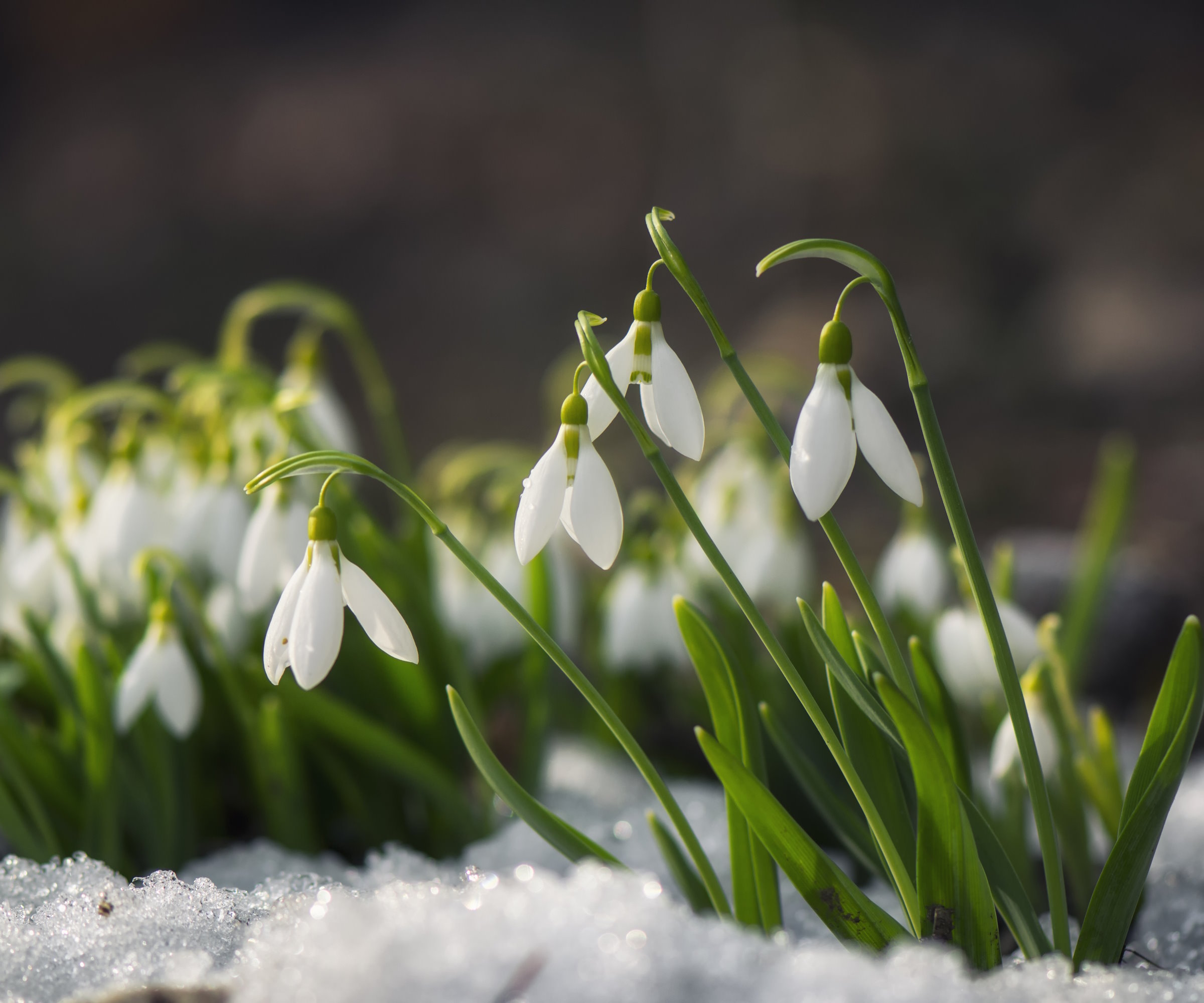
Whether planted in borders or in drifts beneath trees, milky white snowdrops add a magical air to winter gardens.
For a long, successional display that lasts from mid winter to spring, choose a few different snowdrop varieties, although you should prioritize the common species Galanthus nivalis (bulbs available at Amazon) which will self-seed over time.
Make sure you know how to plant snowdrops. Planting young snowdrops ‘in the green’, in springtime, is the best way to establish them. But planting the bulbs in the fall is less expensive.
You can grow snowdrops across US hardiness zone three to zone seven.
8. Dogwood
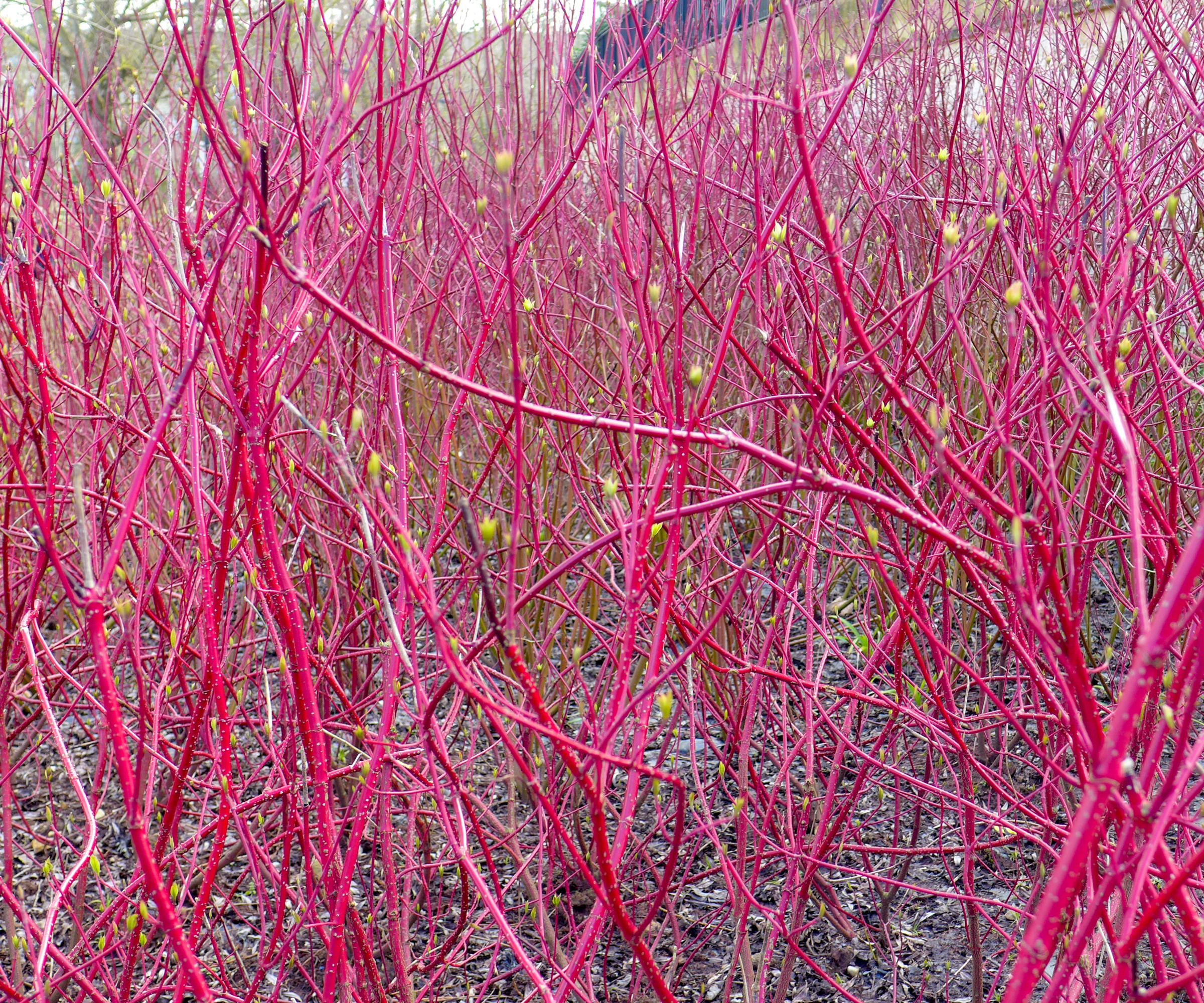
The common name for the cornus family of plants, dogwoods are hardy deciduous shrubs, and add a dramatic feature to gardens during winter, when their foliage fades to reveal vibrant stems. They are also among the best fast growing shrubs.
'I love using 'Ivory Halo' dogwood because after the leaves fall the branches turn a deep beautiful red as the weather gets colder,' says Laura. 'Also, the trunk of the Coral Bark Maple or 'Senkaki' begins to glow with a red hue just as the leaves have finished falling,' she adds.
For a stunning contrast with other winter favorites, try planting dogwood as an informal hedge and underplant with snowdrops.
Also learn when to prune dogwood trees to keep them looking their best. Dogwood needs coppicing hard in early spring.
Dogwoods grow across US hardiness zone five to zone nine. You can shop the range of dogwoods available at Nature Hills.
9. Hellebores
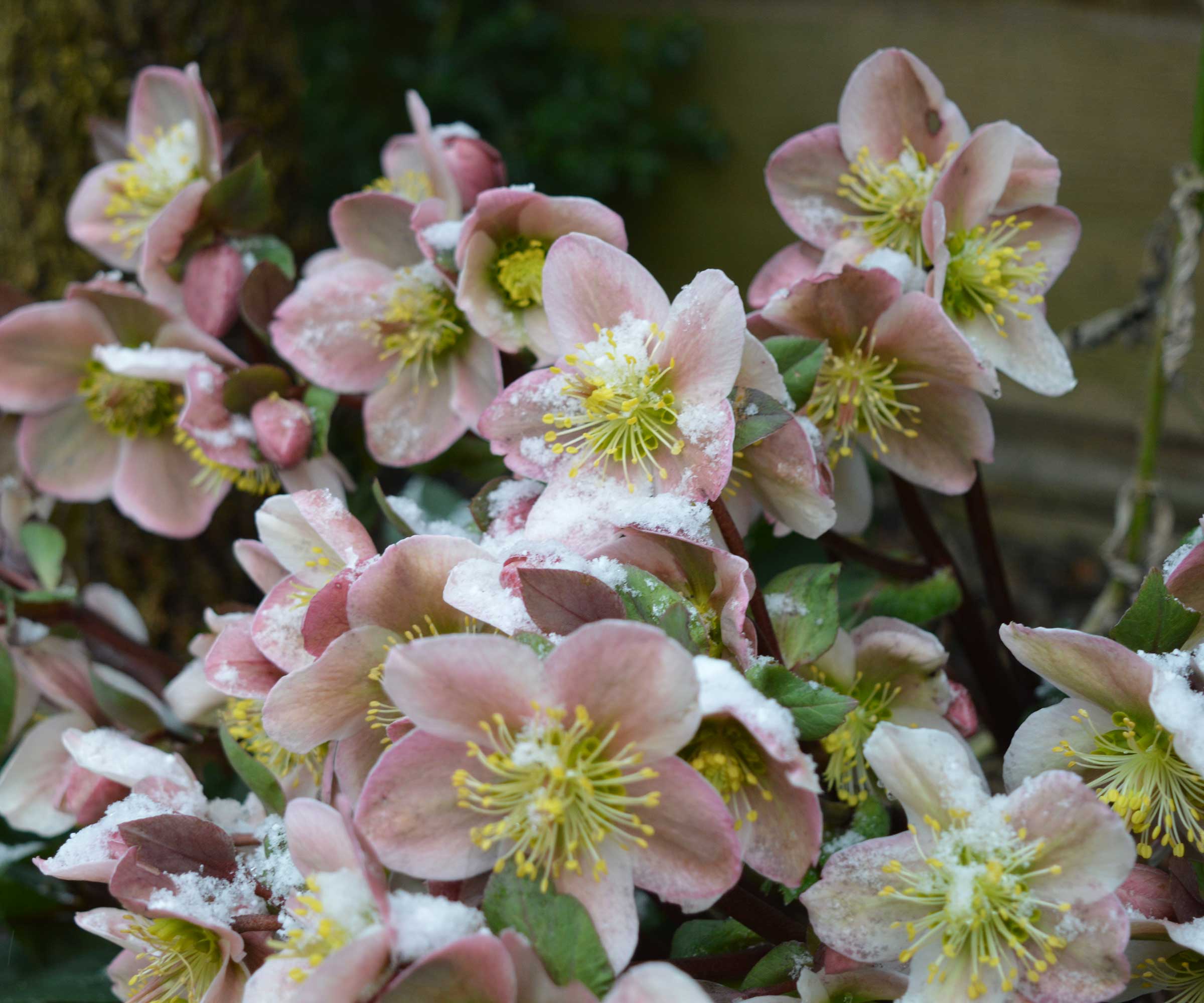
Also known as Christmas roses, hellebores are some of the best winter plants for sheltered gardens with lots of trees, as they need a semi-shaded position.
It's easy to learn how to grow hellebores - they thrive in garden shade and grow best across US hardiness zone four to zone nine.
The low-growing plants are also beloved of bees and other pollinating insects, providing much-needed food at this scarce time of year, and they also work well as woodland plants.
It's best to grow hellebores in most, well-draining soil, but they do tolerate most types of soil.
To maintain hellebores, deadhead the flowers once they have died back in the spring, and in winter remove any dead leaves.
10. Mahonia
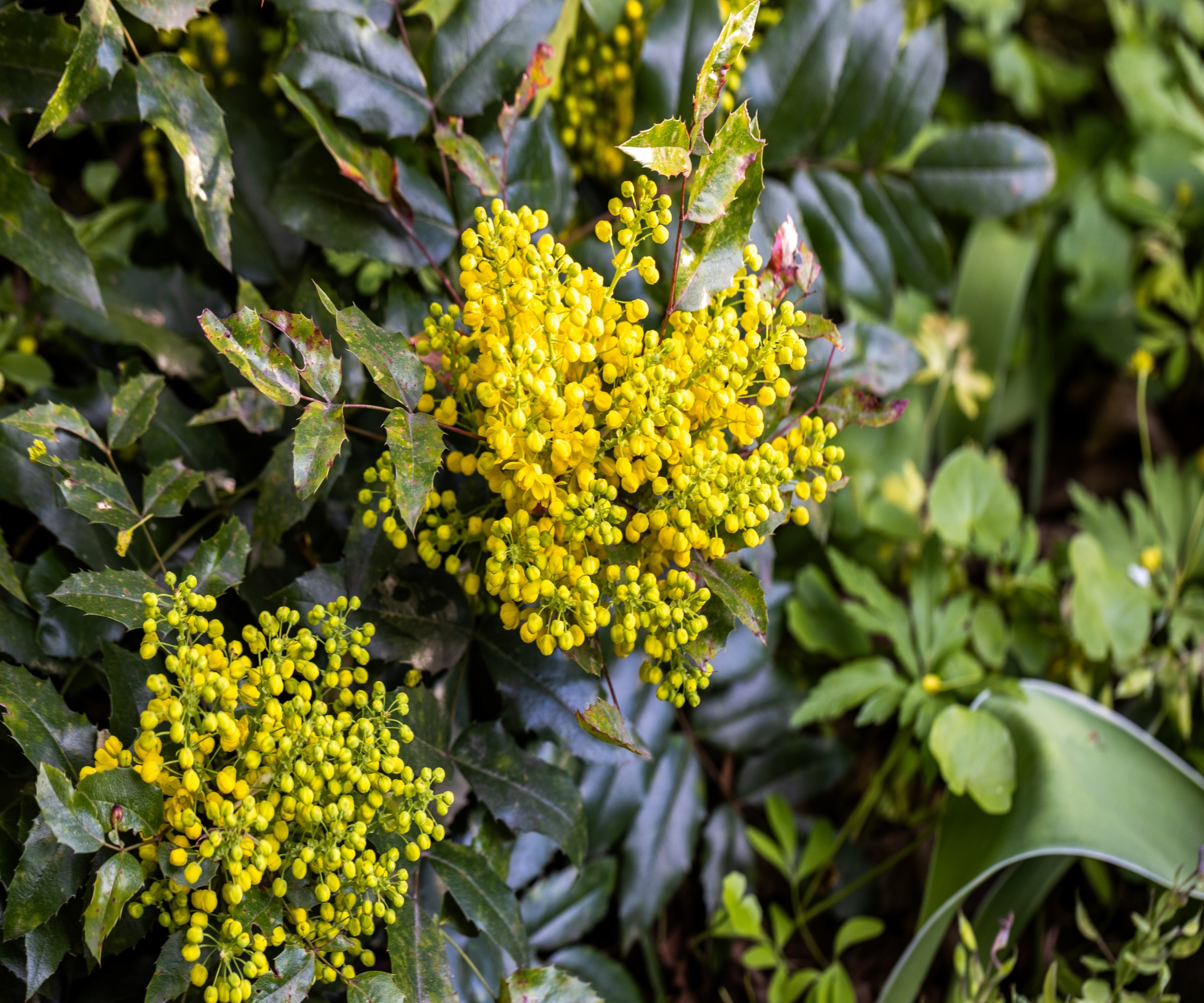
Mahonia makes a fabulous backdrop to other plants in a winter garden, and depending on the variety works at the back of a border or as ground cover. They are good shrubs for shade if you have darker corners of your garden.
As an evergreen shrub, mahonia adds structure and color year round with its pinnate leaves. In winter the plant yields spikes of delightfully fragrant flowers, which provide food for bees. Then these fade in the spring, to be replaced with clusters of deep purple berries in the fall.
Mahonia grows well across US hardiness zone five to zone nine.
Best winter plants for pots
When selecting the best winter plants for pots, bear in mind that most plants grow very little at this time of year. That's why you should start with good-sized plants for instant impact.
Perhaps the best thing about growing winter plants in pots is that you can completely control their soil type and position, moving them around the garden to suit.
Remember to place containers where they'll get as much light as possible during winter, too.
See our guide on how to plant a winter container for further inspiration.
1. Pansies
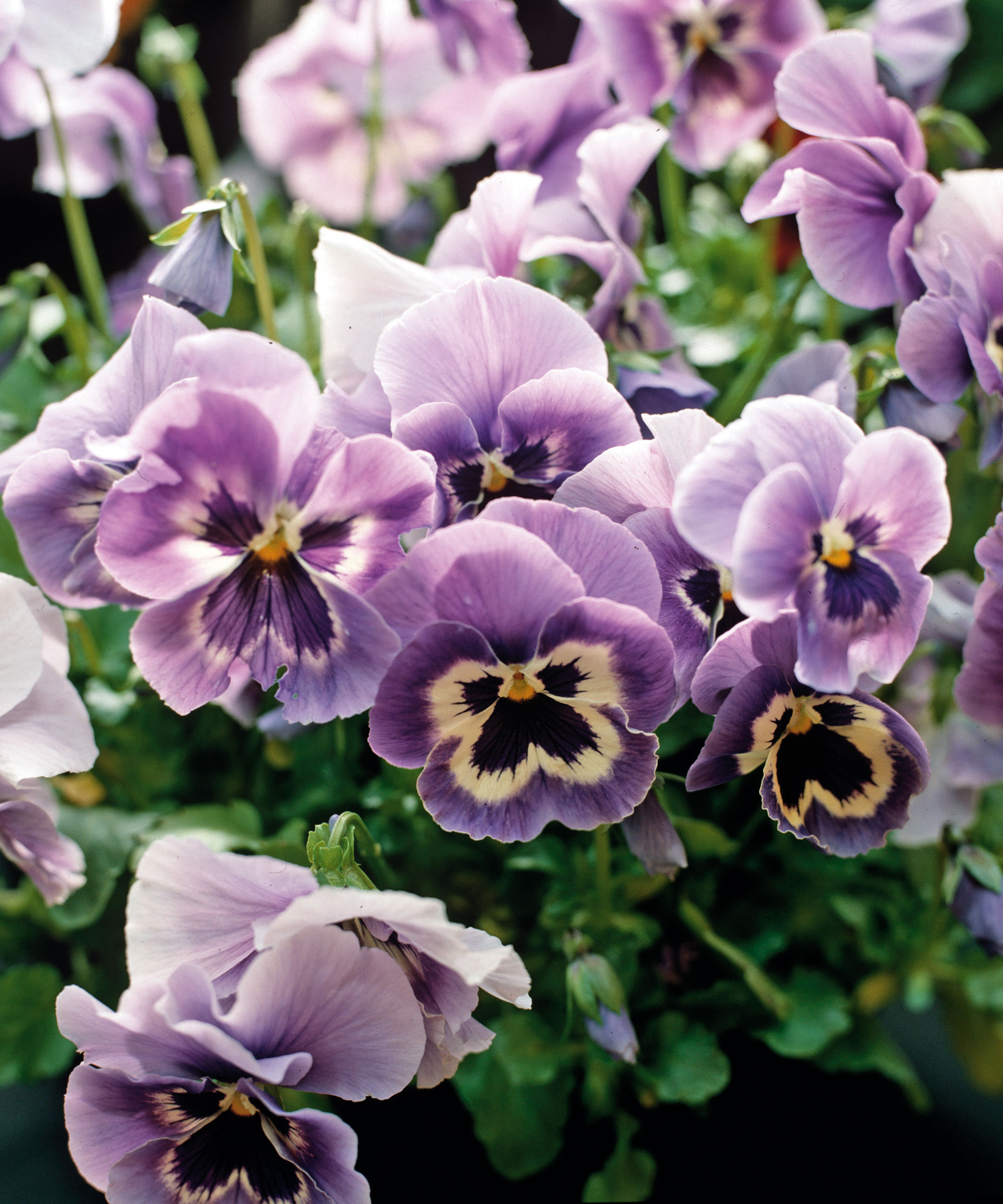
Part of the viola family, pansies are an icon of winter gardens. With beautiful, colorful flowers that thrive in cool temperatures, they're sure to bring a cheerful display to winter gardens.
Pansies will flower in mild spells right through to early spring. Plant them en masse in containers alongside other favorites, such as cyclamen.
Plant established seedlings in pots in the fall, and they will be thriving by the time winter arrives.
You should position your pansies where they will get morning sunlight. Make sure to move them into shade to avoid afternoon heat and prevent issues like leaf scorch.
'They are tolerant of frost and can bloom through the winter down to zone eight. These plants are hardy to zone six, and if care is taken to protect the crowns from freezing – by covering with a layer of mulch – these resilient little plants will happily resume blooming as the soil warms in spring,' adds Zolene Quindoy.
There is a wide range of winter pansies to choose from. Try this pansy seed mix from Amazon.
2. Primroses
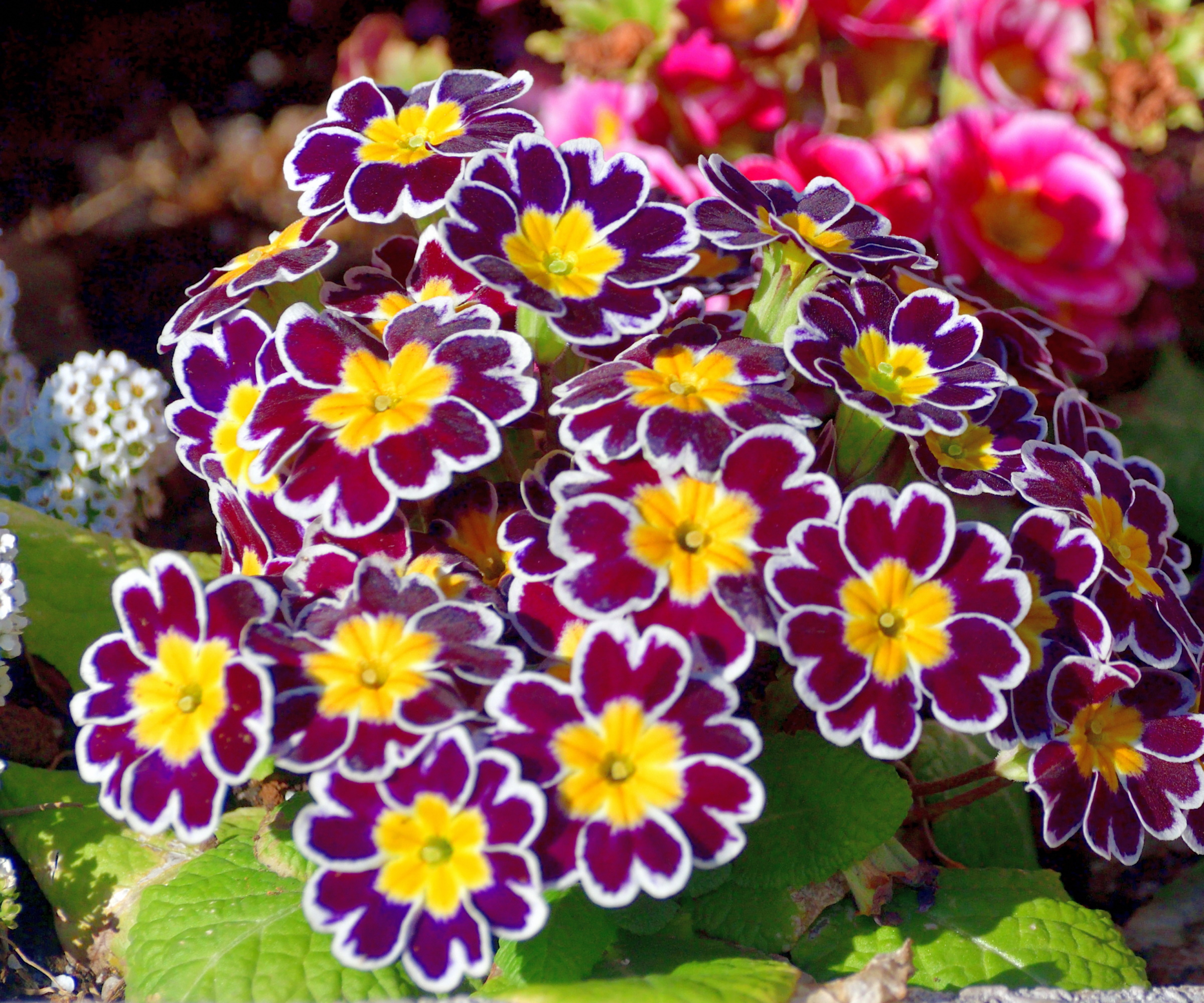
Winter-flowering primroses are brilliant at brightening up those dull corners in the garden, as they thrive in part-shade.
They are perennials that are well equipped to survive harsh winters, and will continue to multiply year after year.
Primroses should ideally be planted in early fall – choose two or three varieties for a successional bloom that lasts from late fall to early spring. Some varieties, such as Everlast, will flower for as long as six months.
The plants don’t like to sit in water, so make sure you choose a well-draining potting mix when planting primroses in containers.
Grow primroses across US hardiness zone three to zone nine. Discover the range of primroses available at Nature Hills.
3. Winter aconites
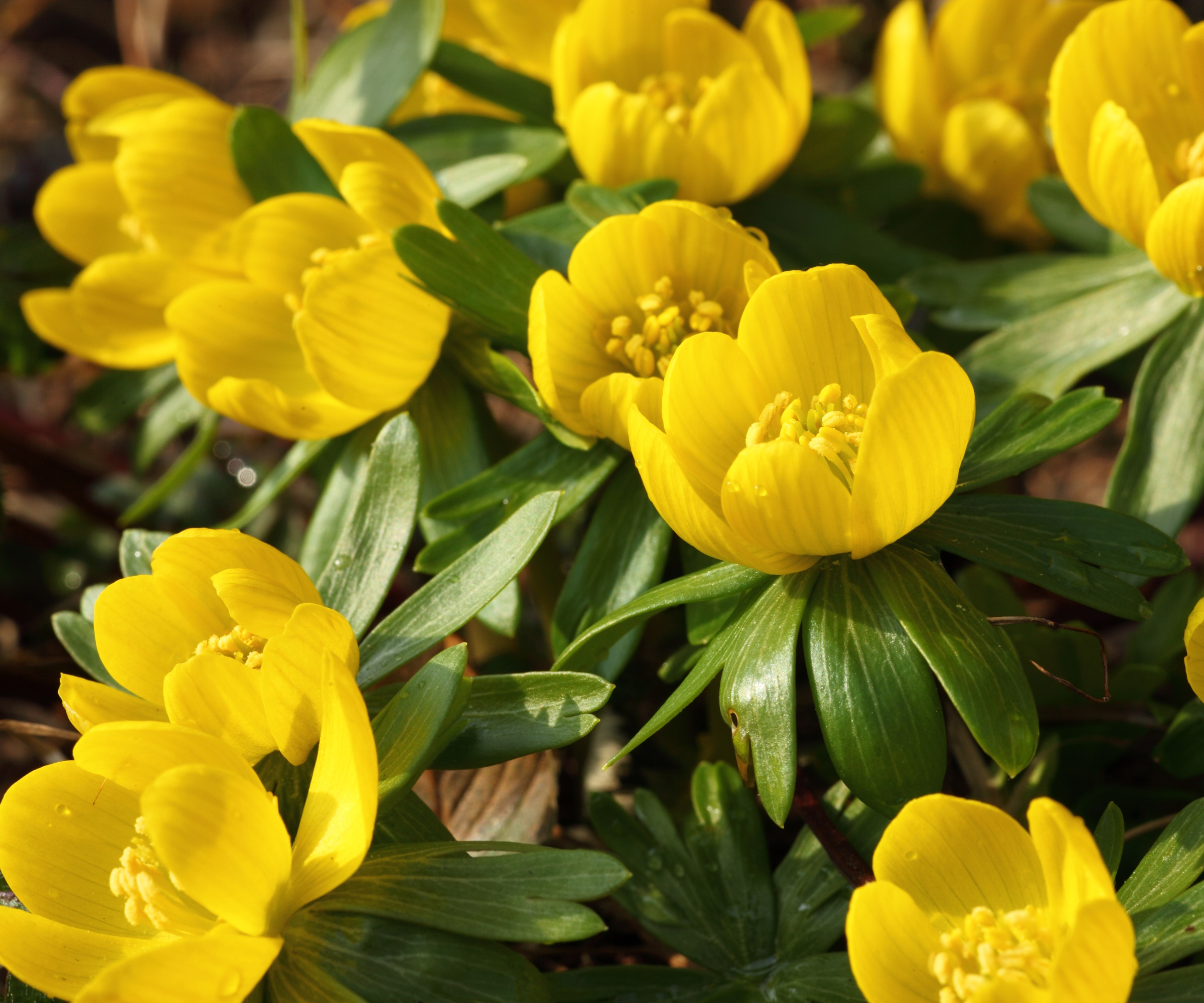
Originating from shady woodlands, winter aconites add a cheery dose of sunshine on the darkest of days, flowering in January and February. Their shallow roots make them perfect for pots, and they require minimal attention.
Plant in moist but well-draining soil, and position the pot in a partially shaded spot. Like snowdrops, they are best planted ‘in the green’, just after flowering, but you can alternatively plant bulbs in the fall.
These woodland plants thrive across US hardiness zone four to zone seven, and you can shop winter aconites at Nature Hills.
4. Heucheras

It isn't just about the best winter flowers for pots, either, as there are plenty of plants that offer colorful foliage for the colder seasons. Coming in hues from purple, to red, and yellow, heucheras are one of the top choices.
'Heuchera ‘Changeling’ separates itself from the crowded field of heuchera by being a chameleon in a container,' says Chuck Pavlich. 'The variable, yet muted color palette inspires and unties other colored foliage in a container. Pink, salmon, burnished gold, taupe, tan and moss green are in constant flux over the foliage,' he adds.
Grow heucheras in a dappled shade position and make sure to use a planter with drainage holes.
You can grow heuchera varieties across US hardiness zone four.
5. Lungwort
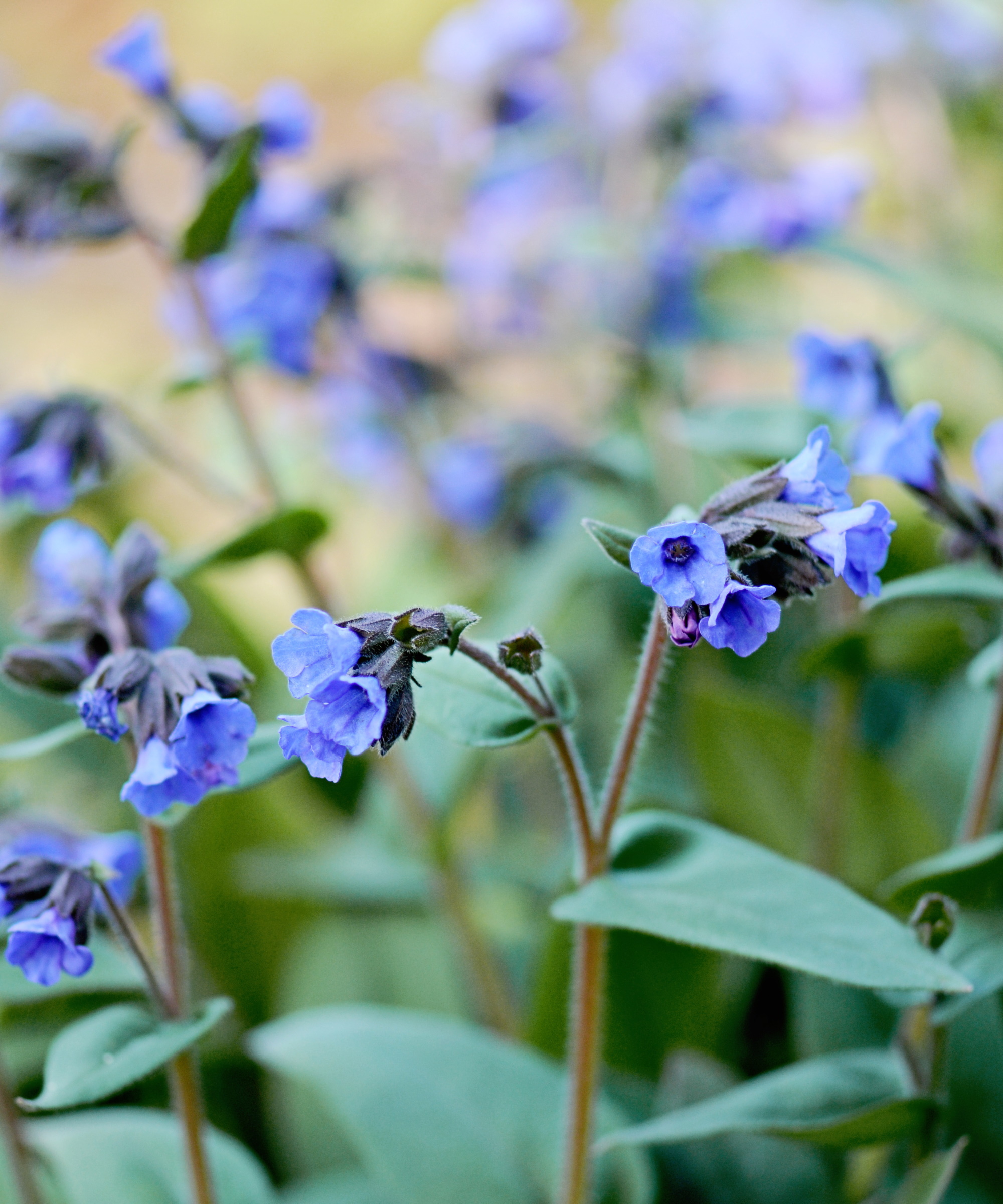
Lungwort, or pulmonaria, is a beautiful flowering plant that blooms from late winter through to spring. They come in hues of blue, purple, and pink, and also often have unique, patterned foliage that adds interest to your winter pots.
'Pulmonaria ‘Raspberry Frost’ is a lovely, variegated version of our favorite spotted pulmonaria,' Chuck suggests. 'The clean white edge is quite ornamental and elegant. Minty silver foliage is dense and grows in a star-shaped pattern around the crown. Pulmonaria are very hardy and simple to grow. The spring floral display is outstanding too,' he adds.
Not only do they grow well in pots, you can also grow pulmonaria as a ground cover plant for shade.
You can find Pulmonaria 'Raspberry Frost' at Nature Hills.
FAQs
Do winter pots need to be protected from frost?
Whether your pots need to be protected from frost depends on the plants you're growing in them. Some plants will need to be winterized, which includes things like wrapping pots in burlap (from Amazon). Other pot plants are winter hardy and need minimal protection to survive harsher weather. The best thing to do is research the needs of the specific plants you're growing and put precautions in place accordingly.
These plants are guaranteed to infuse beautiful color and shape into your yard for winter. Of course, you might already have an established container garden that thrives in spring. In this case, make sure to protect container plants so they return again when the weather warms up.

Melanie has worked in homes and gardens media for two decades. Having previously served as Editor on Period Living magazine, and worked on Homes & Gardens, Gardening Etc, Real Homes, and Homebuilding & Renovating, she is now focusing on her passion for gardening as a Senior Editor at Gardening Know How. As a keen home grower, Melanie has experimented with pretty much every type of vegetable at some point – with mixed results. Often it is the simplest things that elude you, which may explain why she just can't seem to master zucchinis.
- Tenielle JordisonGardens Content Editor
- Rachel Crow